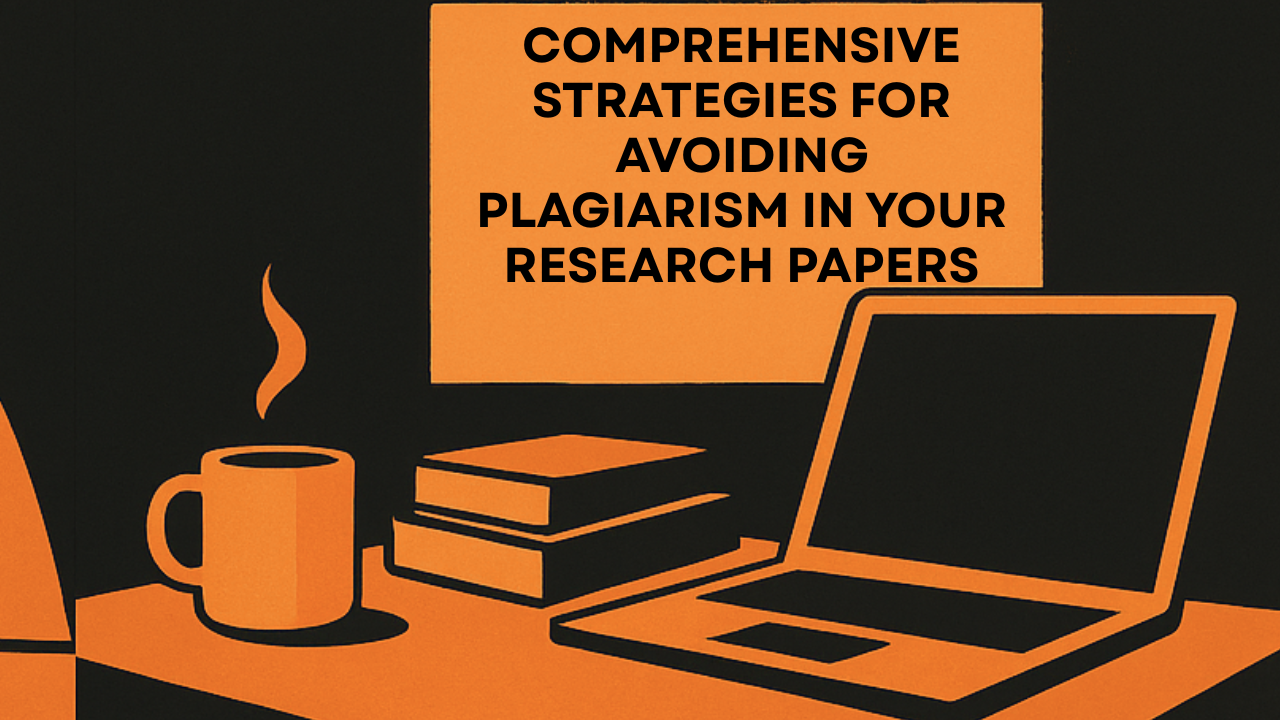Comprehensive Strategies for Avoiding Plagiarism in Your Research Papers
Preserving academic integrity is crucial in today’s digital age, where information is easily accessible. Plagiarism—whether intentional or accidental—can damage academic reputations and devalue scholarly work. Researchers must address this challenge to ensure authentic work. Plagiarism includes unethical practices like direct copying and improper paraphrasing. Avoiding plagiarism fosters respect for intellectual property and original thought, vital for academic progress. This article explores strategies for preventing plagiarism, including recognizing sources, effective paraphrasing, and using technology and AI responsibly to maintain originality and ensure your research paper reflects genuine contributions.
Understanding Plagiarism
Plagiarism is the act of stealing and misrepresenting someone else’s work or ideas as your own. This issue isn’t limited to textual content—art, music, and other creative forms need acknowledgment, too. Intentional plagiarism includes directly copying or acquiring materials without proper attribution, while accidental plagiarism can occur even without malicious intent when one neglects to cite sources accurately. It’s crucial to employ the right strategies to avoid plagiarism, such as managing your time effectively, upholding good research practices, and emphasizing original thought alongside sourced information. When integrating AI-generated or existing content into your work, always provide accurate citations to maintain integrity and support your educational growth.
Different Types of Plagiarism
Plagiarism affects academic integrity through various forms. Global plagiarism is the most severe, copying entire works without attribution. Verbatim plagiarism involves copying text word-for-word without citations. Paraphrasing plagiarism changes the wording but not the ideas, which remain uncited. Patchwork plagiarism mixes information from different sources unoriginally, while self-plagiarism involves reusing one’s previous work without acknowledgment. Understanding these is essential for academic honesty and credibility.
The Importance of Avoiding Plagiarism
Avoiding plagiarism is crucial for maintaining academic integrity. Proper citation credits authors and shows respect for intellectual property. Cite sources correctly and follow citation guides to prevent plagiarism. Failing to do so can impact your academic and career prospects. Good research habits and time management help avoid plagiarism. Balance source material with original ideas and plan your paper’s structure to prevent accidental plagiarism. Developing these skills supports personal and institutional honesty.
Recognizing and Citing Sources
In academic writing, distinguishing between your insights and those from sources is crucial for integrity. Start by understanding and correctly contextualizing information, whether from books, articles, or online. Craft thorough citations, including details like author, title, publication date, and URLs. Keeping detailed source records is vital for accurate bibliographies, a key element of scholarly work. Tools like Zotero and EndNote can help organize sources. Adhering to citation styles like APA is also essential, including for single-source citations, which need details like author name and publication year. Place citations immediately when quoting or paraphrasing to avoid losing track and accidentally plagiarizing. For multiple sources, cite each clearly with full details in your reference list. Digital sources require URLs and access dates for clarity. An organized approach helps prevent plagiarism and ensures proper credit.
Effective Paraphrasing Skills
Paraphrasing is pivotal in academic writing, requiring restating authors’ ideas in your own voice and a solid grasp of the material. Properly citing the original source is essential to prevent plagiarism and maintain academic integrity. Tweaking phrases or mirroring structures without citation also counts as plagiarism. Include main ideas relevant to your discussion, leaving out unnecessary details, to seamlessly integrate paraphrased material while distinguishing your ideas from others’. Credit sources diligently by attributing any sourced text or data. Plan your research by outlining ideas to differentiate original thoughts from borrowed ones. Use quotations with proper citations for verbatim text and employ plagiarism detection tools to ensure originality. Balance your ideas with research through careful planning and ethical scholarship. Cite all sourced content, allowing others’ work to enhance rather than overshadow your narrative. Adhering to citation guidelines throughout your career cultivates a distinct voice, clearly separating your insights from borrowed knowledge.
Planning and Organizing Your Paper
Developing a clear and structured approach is key to avoiding plagiarism in academic writing. Begin by crafting a strong thesis statement and outline to clearly separate your thoughts from those of other authors. This organization helps maintain focus and reduces the risk of unintentional plagiarism. Effective time management is crucial; it allows you to conduct thorough research and properly attribute sources, thereby avoiding potential pitfalls of hasty or incomplete citation practices. Embrace ethical research habits to ensure all sources are cited accurately, maintaining academic integrity. Additionally, taking responsibility to understand and practice effective citation techniques, such as using formal citation styles and consulting a citation style guide, safeguards against accidental plagiarism. Leveraging resources like online plagiarism courses can enhance your skills in integrating sources without improperly appropriating authorship.
Effective Note-Taking Strategies
Adopting effective note-taking strategies is essential in distinguishing your ideas from those found in external sources, thus avoiding plagiarism. Clearly label and organize each source as you take notes to maintain clarity about the origin of ideas. This organization helps prevent confusion between your thoughts and research inputs, reducing the risk of potential plagiarism. Reflect a clear understanding in your notes of what information is original and what has been borrowed. Managing your time well during note-taking prevents rushed work that could lead to unintentional plagiarism, reinforcing the importance of accurate note-taking in maintaining academic integrity.
Analyzing and Evaluating Your Sources
Critically analyzing and evaluating sources is a crucial step in avoiding plagiarism, as it ensures the credibility and reliability of the information you incorporate into your writing. Start by identifying the author(s), the source’s origin, and publication date, which helps determine its trustworthiness. Assessing the quality of writing and the accuracy of information further establishes source credibility, enabling informed decision-making about its inclusion in your work. Understanding how well a source supports its ideas is another key evaluation criterion, allowing for better integration into your research. Resources like New Mexico State University’s Web Page Evaluation Criteria can be instrumental in discerning the reliability of online sources. By selecting only credible sources, you minimize the risk of plagiarism and enhance the overall quality of your academic writing.
Technological Aids for Plagiarism Prevention
In the realm of academic writing, technological aids play a pivotal role in preventing plagiarism. These tools offer students and educators resources to maintain originality and adhere to citation standards. Plagiarism detection software is prevalent in universities, scanning submitted texts and comparing them to extensive databases to identify potential plagiarism. Moreover, these tools often check for uncited or improperly cited content, thus reducing the risk of inadvertent plagiarism. Some platforms even provide specific guidelines and checklists, enriching students’ understanding of proper source integration. By using these technological aids, students can avoid the pitfalls of accidental and intentional plagiarism, ensuring their work remains credible and authentic.
Using Plagiarism Checkers
Plagiarism checkers are essential tools used to uphold academic integrity by comparing submissions against vast databases and identifying similarities that might indicate plagiarism. Utilizing a plagiarism checker before submitting any academic paper is a strategic practice, facilitating the identification of properly noted citations. Turnitin Draft Coach, for instance, assists in this process by ensuring originality in a student’s work. It effectively addresses the risk of accidental plagiarism, a common issue among learners, by highlighting any omissions in citation. Such tools are indispensable in academic settings, helping maintain rigorous standards of integrity and scholarship.
Leveraging Educational Resources
Educational resources are vital in guiding students to avoid plagiarism by providing comprehensive overviews of this critical issue and offering practical strategies. Online courses and library research guides are excellent resources that often include detailed sections on citing sources accurately. Plagiarism checkers, such as those offered by Scribbr, are not just tools for detection but serve an educational purpose by teaching students about proper sourcing and originality. Academic institutions encourage students to utilize these resources, advising consultations with instructors and the use of tools like Turnitin to verify the originality of their work. By incorporating these educational aids, students can effectively manage their studies while adhering to high academic standards.
Responsible Use of AI Tools
The integration of artificial intelligence in academic writing demands a responsible approach to avoid potential missteps in scholarly work. Using AI tools requires authors to review AI-generated outputs meticulously, ensuring these are not mistakenly submitted as original work. Employing AI detection tools can aid in verifying the originality of content. Users must treat AI-generated material as any other source, which includes correct citations and acknowledgments to prevent intellectual property theft. By combining AI insights with original thoughts, writers can maintain the integrity of their papers and avoid allegations of plagiarism, intentional or accidental. Proper referencing is crucial when AI tools are utilized, as failure to acknowledge this assistance can lead to serious academic consequences.
Benefits and Risks of AI Assistance
AI tools like ChatGPT can greatly enhance writing and research processes by offering insightful content generation and simplifying complex tasks. However, they also carry risks, notably AI-assisted plagiarism or self-plagiarism if misused. Writers must be cautious not to present AI-created content as their own, as universities are equipped to detect such instances using specialized AI detectors. Failure to credit AI-generated paraphrases can violate academic integrity standards, leading to possible disciplinary measures. Users must ensure they clearly differentiate between their contributions and those influenced by AI, maintaining rigorous citation practices to uphold academic honesty.
Ensuring Originality with AI
Maintaining originality while utilizing AI tools is essential to academia. Plagiarism can occur when AI outputs are presented as personal work or when paraphrased ideas from other sources lack appropriate references. Proper paraphrasing involves thoroughly rephrasing ideas in one’s own language and acknowledging the original source. Self-plagiarism, or reshuffling past work without citation, breaches academic integrity unless expressly allowed. Tools like Turnitin Draft Coach offer preventive measures, allowing authors to verify the genuineness of their writing and correct citations before submission. These practices help ensure that even with AI’s assistance, academic work remains authentic and ethically sound.
Resources and Tools
Academic writing demands original content and accurate credit to the sources of referenced ideas. To avoid plagiarism, scholars use various resources and tools to ensure their work is authentically their own. Plagiarism detection software is prevalent in educational institutions, providing a robust means to identify text similarities with other works in their database. Notably, Turnitin Draft Coach is a tool specifically designed to aid students in reviewing their drafts to ensure originality and correct citation before submission. Using citation management tools can systematically organize references, reducing the risk of potential plagiarism. Meticulous note-taking and monitoring of sources are crucial, as mismanagement or incorrect file naming can lead to accidental plagiarism. Consulting instructors and utilizing a checklist can further aid in understanding the correct integration of sources and proper citation, contributing to ethical academic writing practices.
Lecture Slides and Guides
Integrating external ideas through paraphrasing while maintaining academic integrity requires effectively crediting the original authors. Paraphrase correctly by rephrasing ideas, ensuring that each instance includes proper citation of the source. This involves compiling a comprehensive reference list that accounts for author name, title, publisher, year, and details like page numbers, particularly with electronic resources which should include URLs and revision dates. These practices shield students from both intentional and unintentional plagiarism, with a formal citation style ensuring the reader can trace back the original material. Balanced use of personal insights alongside sourced content forms a robust academic argument. Avoiding plagiarism is possible through the planning of works, effectively balancing external ideas with original thoughts, and correctly citing every sourced idea, no matter how minor it seems.
Conclusion and Summary of Best Practices
Plagiarism avoidance is crucial for academic integrity. Key strategies involve planning, balancing personal insights with sources, and proper citation. Always cite to avert plagiarism. Manage time well to avoid last-minute errors and properly credit sources, reducing unintentional plagiarism risks. Study ethical scholarship and citation styles using tools like Citation Generators. Online courses on plagiarism enhance understanding and citation skills. Ultimately, follow ethical standards, use correct citation methods, and refine your citation habits to minimize citation errors, ensuring plagiarism-free academic work.

